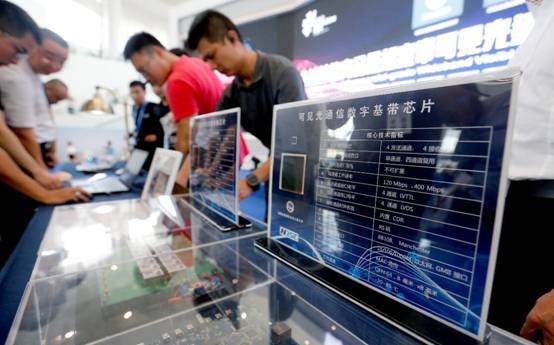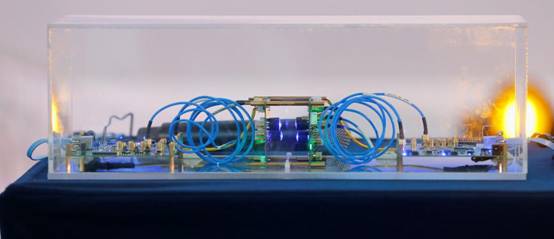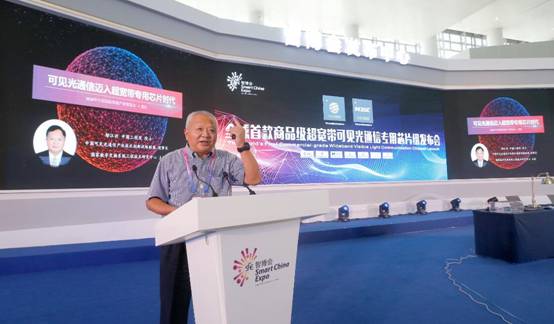From the man who is at the center of A1 program in China
Leapfrogging: How China caught up to Silicon Valley
By
AUGUST 31, 2018 3:23 AM (UTC+8)
An upcoming book on
makes the startling contention that in just the last three years, China has caught up to Silicon Valley in AI. And, no, Mr Trump, it’s not because the Chinese stole the algorithm from Google. Rather, China leapfrogged the US in mobile computing, which enabled it to take a different path to AI nirvana.
The full title of Dr Kai-fu Lee’s book, which will be published next month, is
AI Superpowers: China, Silicon Valley, and the New World Order. Lee is one of the pioneer creators and thinkers of artificial intelligence. After he obtained his doctorate in AI from Carnegie Mellon University in Pittsburgh, Pennsylvania, he joined Apple in Cupertino, California, to develop a voice-recognition system. He then left for China to build research centers of excellence for Microsoft and Google. Now he is the premier venture capitalist investing in AI startups in China.
Must-reads from across Asia - directly to your inbox
Nowadays, artificial intelligence has become part of daily conversation, even if not everyone understands what AI is all about. Wall Street considers AI to be the latest prime investment in technology, following the Internet and the smartphone. Lee believes development of AI is even more profound than that, equating the future impact of AI on human civilization to be as fundamentally revolutionary as the invention of the steam engine that ignited the first Industrial Revolution, and electricity for the second.
Deep learning raised the power of AI
AI became a real emerging technology when researchers moved machine learning to the next level – “deep learning.” A properly designed neural network can learn to fine-tune an algorithm by repetitive trial-and-error calculations, at lightning speed, until the best solution is derived based on the data set fed to the algorithm. The bigger the data set that’s fed to the algorithm, the better the resulting optimization and solution.
The importance of big data, explains Lee, has allowed China to close the gap with Silicon Valley in AI because China generates much more useful and higher-quality data than the US. Lee credits the late
and the introduction of the smartphone as the event that pushed China into AI development.
Observers in the West may not have noticed that as China’s economy grew at dizzying rates in the 40 years since reforms began, the country has leapfrogged certain crucial developments along the way. Telecommunication is one such example. When China began its economic reforms, its telecommunication network was woefully inadequate. The country was so underinvested in copper-wire lines overland that it was easier for the consumer to adopt the mobile phone rather than waiting for the allocation of a landline.
The smartphone facilitated China’s entry to AI
When Apple introduced the iPhone in 2007, China already had the largest number of mobile-phone users in the world, and those users were primed to upgrade to a smartphone, albeit not always an iPhone but a lower priced, domestically made alternative. At the time most Chinese did not own a computer at home and the smartphone gave them Internet access bypassing the need to buy a computer.
Chinese entrepreneurs quickly learned to develop apps specifically for the smartphone. For example, being decades behind the West, the use of credit cards never really took off in China. Now with WeChat, considered a “super-app” by Lee, the smartphone can be linked to the owner’s bank account and the phone becomes a digital billfold able to make and receive payments.
The author argues that while China remains behind the US on the creative side of writing AI algorithms, it has been closing the gap and in some aspects surpassing Silicon Valley in certain uses of AI
American AI monitors user preferences such as what website a user visits. In China, Tencent, the owner of WeChat, can gather data not only on what the user looked at, but what he or she bought, from whom, where and when. The data collected are of much higher quality and multifaceted. In addition, China has at least three times as many users generating data for feeding into AI optimization than the US.
The author argues that while China remains behind the US on the creative side of writing AI algorithms, it has been closing the gap and in some aspects surpassing Silicon Valley in certain uses of AI. This has occurred within the last three years because China has been gushing high-quality data derived from the smartphone.
Data drive the AI virtuous cycle
The vast quantity of quality data is helping China refine AI, which helps to improve product offerings and that increases customer acceptance, generating even more data to optimize AI programs. Lee calls this the virtuous cycle of AI, whereby the availability of data would allow an inferior AI algorithm to surpass the performance of a superior one that does not have access to as much data.
One example would suffice to illustrate the difference between China and the US. A program in China called Smart Finance has used AI and access to the user’s smartphone to determine the creditworthiness of the individual and grant the user a personal loan. No collateral, no credit report, no personal references, and no banking information are needed. And the single-digit loan-default rate is the envy of commercial banks.
Apparently AI correlation of hundreds of data points residing in the smartphone (Lee calls them weak features) can more accurately evaluate the reliability of the borrower, even if no human banker can fathom why. The iteration of AI over millions of smartphones has established predictive rules, and the accuracy will only improve with use – and defaults will become even more uncommon.
While groundbreaking AI research will continue in the US, China is graduating upwards of a million AI engineers every year. They are motivated and will work long hours to find new products and services based on AI solutions. And the access to huge amounts of data will more than offset their shortcomings as algorithm designers.
China’s leadership recognizes the importance of AI and has allocated financial support to encourage and further AI research. The US? Not so much federal support, and America will continue to depend on private-sector efforts. Private-sector AI will remain proprietary and be kept behind closed doors.
The author does not express much anxiety over possible rivalry between the US and China. He is much more concerned with eventual advances in AI that could lead to widespread displacement of humans by machines. Owners of powerful AI could become members of a small elite class who enjoy all the wealth and status while a “useless” class of masses can no longer generate enough economic value to support themselves.
This is where Lee becomes very personal, drawing from his own dramatic experience as a cancer survivor. He suggests that no matter how advanced AI becomes, it can never replace human interactions that offer love and compassion. He proposes that we begin to prepare by placing higher priority and monetary value on socially beneficial activities. In other words, a drastic and basic reordering of our value system based on humanity.
Lee’s book is a thoughtful treatise on the possible benefits and possible destructive damage AI poses to the world. Anyone wanting to understand the downside of unbridled AI advances on humankind will find relevant questions and answers in this book.
Kai-fu Lee’s book
AI Superpowers will be published by Houghton Mifflin Harcourt next month, and Dr Lee is already scheduled to make several appearances in the San Francisco Bay Area to talk about his book around the last week of September.
The Committee of 100 is the co-sponsor with the Commonwealth Club of Dr Kai-fu Lee’s speaking engagement in Santa Clara, California, on September 26. Go for more information.
Asia Times is not responsible for the opinions, facts or any media content presented by contributors. In case of abuse,
.








